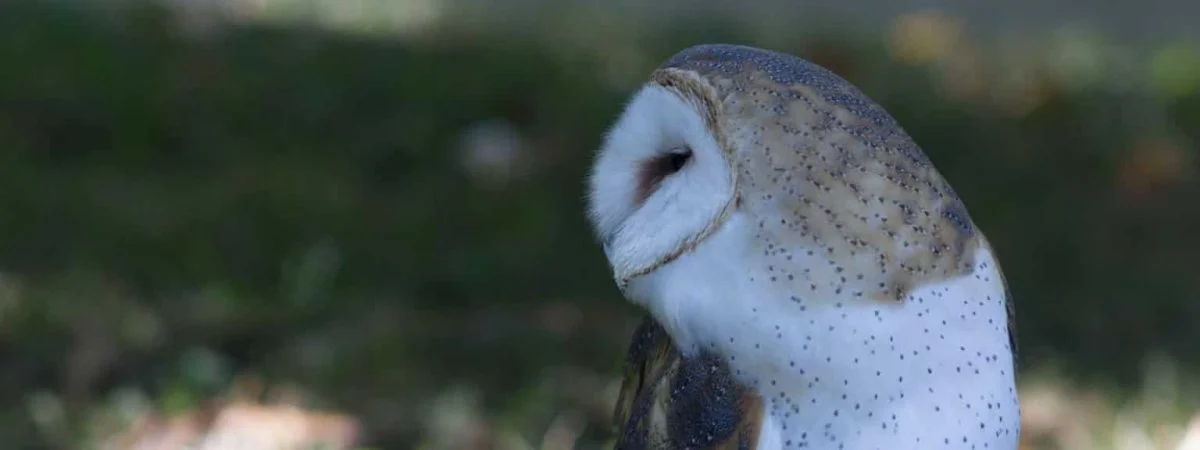
Want to learn more? This National Geographic Book on Owls is a great read!
The state of Connecticut has a temperate climate with mild winter months and warm summer months.
The coastal areas of the state tend to have warmer winter months and cooler summer months compared to the inland areas.
The average temperature in January is about -3oC and the average temperature during July 21oC.
The state of Connecticut is home to a wide range of rich habitats including woodlands, meadows, shrublands, forests, grasslands, rocky outcrops, ponds, cliffs, streams, lakes and rivers.
The richness of habitat in this state makes it a great area for a vast array of different species of wildlife. Connecticut is home to one hundred and thirty-nine state parks and forests, some of which are great places for spotting various species of owl.
Some of the best state parks for spotting owls is Hammonasset Beach State Park and Silver Sands State Park at Milford. The state of Connecticut is home to twelve species of owl.
Want to attract Owls to your yard? Take a look at our article!
What Owls can be seen in Connecticut?
Table of Contents
1. Barn Owl
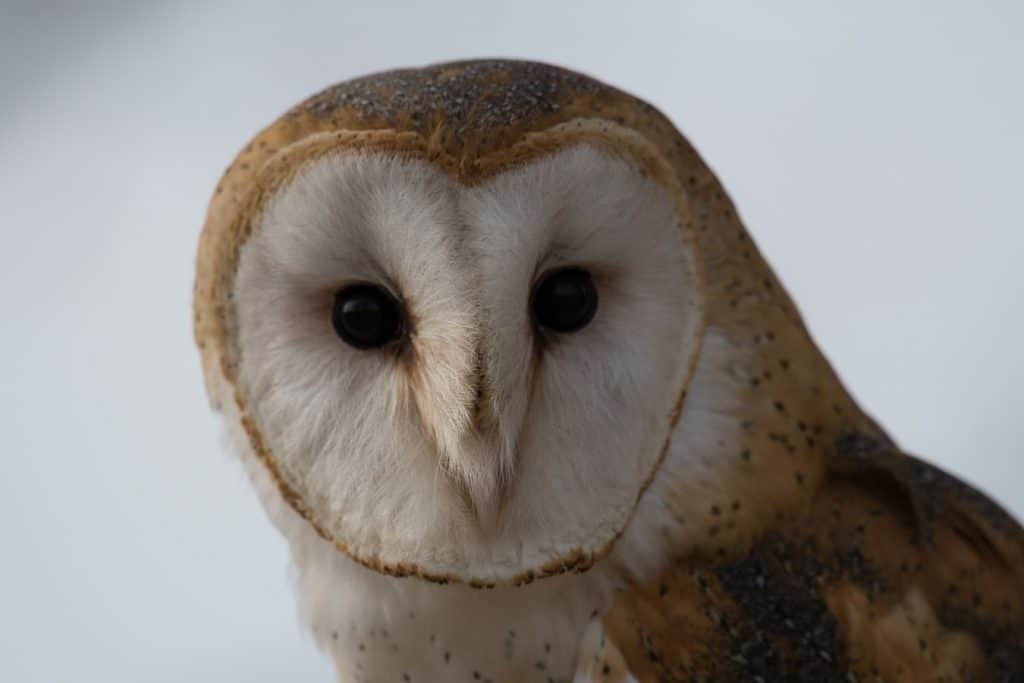
Wingspan
107 to 110 cm
Weight
430 – 620 g
Life Expectancy
Up to 4 years
Diet
Voles, Shrews & Mice
The Barn owl is a medium sized species of owl that are tan brown in colour which can look white when up close to them.
This species of owl has a length of between thirty-two and forty centimetres in length with a wingspan of between eighty and ninety-five centimetres.
The diet of the Barn owl mainly consists of small mammals and rodents; however, they will also eat reptiles, insects and birds.
The Barn owl is classed as an endangered species across the state of Connecticut; however, they can still be seen especially some of the state parks.
The Barn Owl tends to make it habitat across a range of habitats and at different altitudes. They can be found living in urban areas, forests, deserts, wetlands, grasslands, open areas and agricultural fields.
One of the best ways to spot a Barn owl is by listening for its distinctive noise, which is a screeching sound rather than the traditional hoot sounds that is associated with owls.
The Barn Owl can be seen in many open areas across the state of Connecticut however one of the best places to spot one of these owls is Hammonasset Beach State Park in Madison.
2. Eastern Screech Owl
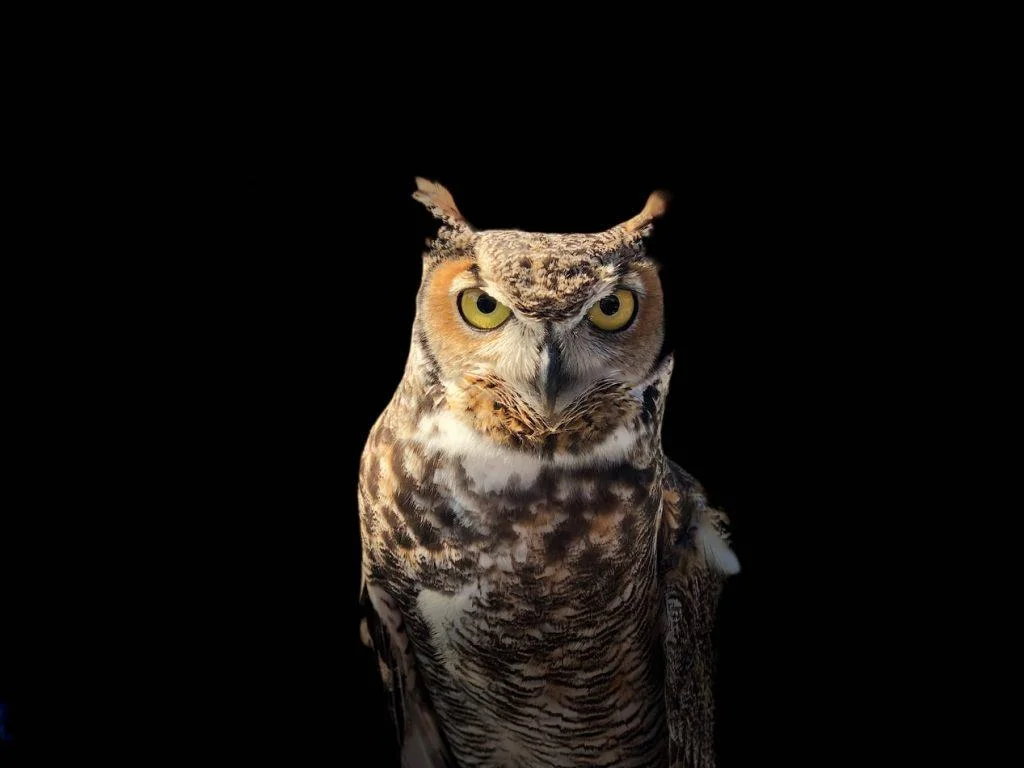
Wingspan
46 to 61 cm
Weight
160 g
Life Expectancy
14 years
Diet
Rats, Squirrels, Rabbits & Skunks
The Eastern Screech Owl is a small species of owl that is between sixteen and twenty-five centimetres in length with a wingspan of between forty-six and sixty-one centimetres.
The Eastern Screech will be either a reddish-brown colour or a grey colour with a complex pattern of spots or bands which gives the species good camouflage against the bark of trees.
These owls tend to live around the Rocky Mountains.
The Eastern Screech owls tend to make their habitat in a range of different habitats including riparian woods, wetlands, suburban woodlands, deciduous forests, parklands, mature orchard and woodland areas close to meadows, marshes and fields.
The diet of the Eastern Screech owl consists mainly of large insects, beetles, crickets, rodents, shrews, bats, small birds, earthworms, crayfish and other small animals.
Eastern Screech owls are very common in the state of Connecticut and they can often be seen hunting at dusk, as these are a nocturnal species.
These owls will consider nesting in nest boxes therefore it’s a good idea to build a nest box in your backyard if you have these owls living in your local area.
3. Great Horned Owl

Wingspan
~140cm
Weight
1.4 kg
Life Expectancy
28 years old
Diet
Squirrels, Rabbits & Skunks
The Great Horned Owl is one of the most common owls in the state of Connecticut.
The Great Horned owl is between forty-three and sixty-four centimetres in length and a wingspan of between ninety-one and one hundred and fifty-three centimetres.
The Great Horned owl is a mottled brown and grey colour with their face being reddish-brown colour with a white patch on their throat.
The Great Horned Owl commonly makes its habitat around areas of farmland and woodland.
The Great Horned owl is a nocturnal species of owl and they are very adaptable therefore can live in range of habitats.
These owls will also make their habitats in backyards, wetlands, deserts and around city areas.
The diet of the Great Horned owls mainly consists of mice, frogs and insects however it is not uncommon for them to eat birds and other mammals.
One of the best places to find a Great Horned Owl in the state of Connecticut is in Sherwood Island State Park in Westport.
4. Northern Saw-whet Owl
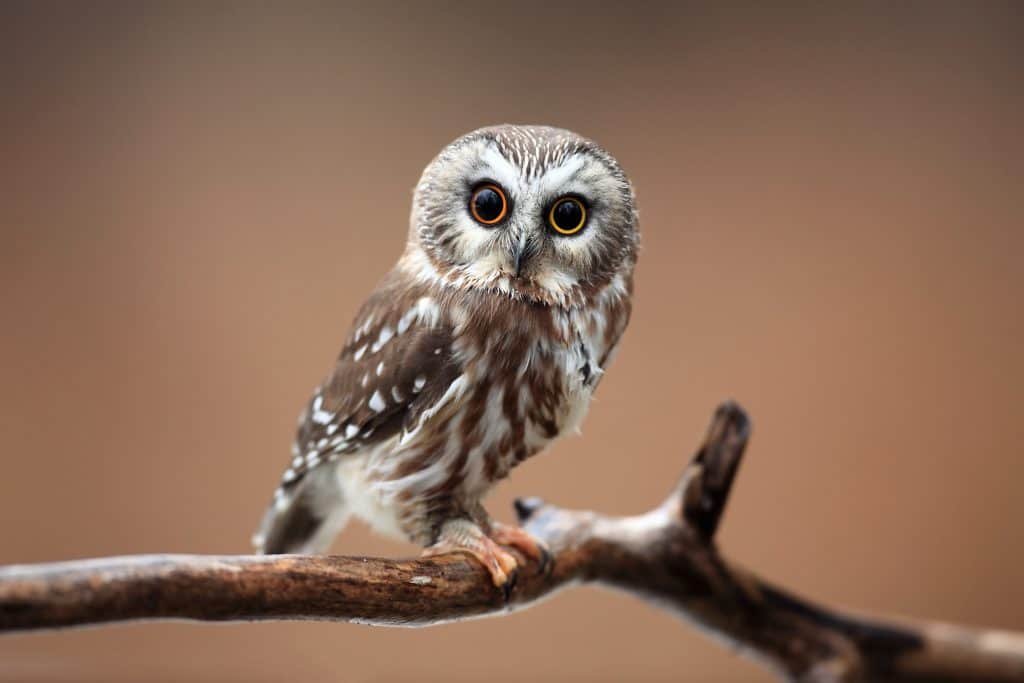
Wingspan
40 - 60 cm
Weight
100 g
Life Expectancy
7 years
Diet
Small birds, young squirrels, voles & shrews
The Northern Saw-Whet Owl is a dwelling bird which can commonly be seen in forest areas across the state of Connecticut.
During the winter months these owls prefer to be in areas of dense habitats.
These owls can often be found in coniferous forests or forests with a mixture of species. The Northern Saw-Whet Owl is between eighteen and twenty-two centimetres in length with a wingspan of between forty-two and fifty-six centimetres.
The Northern Saw-whet owl is a mottled brown colour with a white disc shaped face and startling yellow eyes.
The young Northern Saw-whet owls tend to have a dark brown plumage with creamy yellow undercarriage.
The diet of the Northern Saw-whet owl tends to comprise of mice especially deer mice. It is not uncommon for this species of owl to eat large insects, small birds, young squirrels, shrews and voles.
These owls are widely distributed throughout the state of Connecticut.
During the winter months these owls can be found in Greenwich Point Park, Sherwood Island State Park, Hammonasset Beach State Park in Madison and Haley Farm State Park in New London.
5. Short-Eared Owl
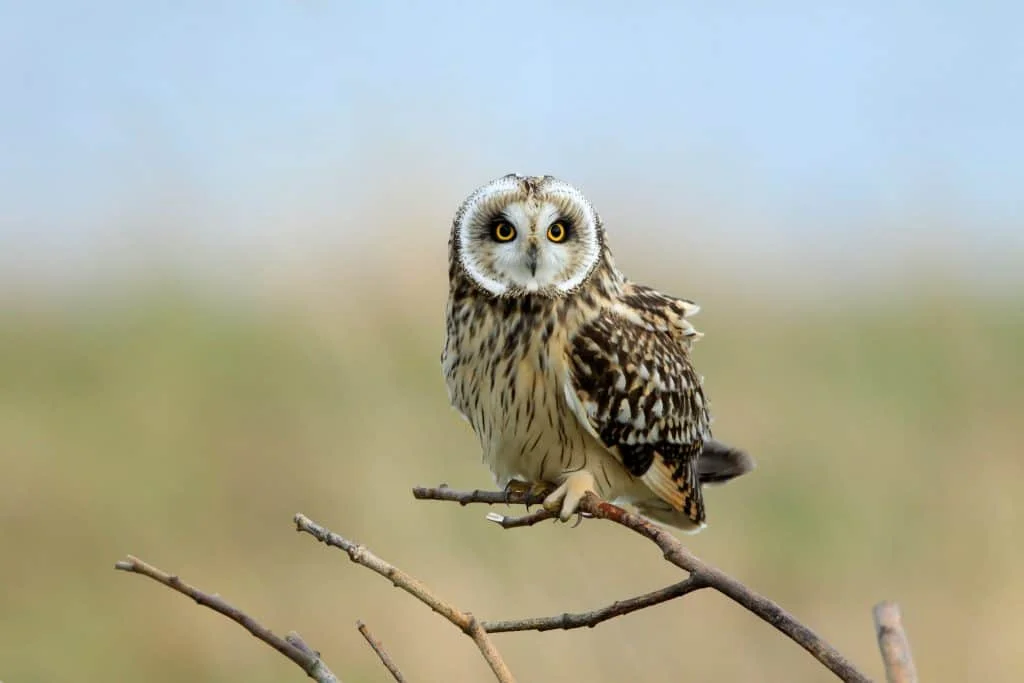
Wingspan
85 to 110 cm
Weight
206–475 g
Life Expectancy
4-12 years
Diet
Voles, Mice, Squirrels
The Short-Eared owl is one of the most common species of owl that is found across the state of Connecticut.
The Short-Eared owl is a medium sized owl that has a brown plumage with buff spots and a white undercarriage and yellow eyes with a black outline.
These owls prefer to live in treeless or open areas preferably areas of bog and marsh.
The Short-Eared owl is a medium sized species and it is between thirty-four and forty-two centimetres in length with a wingspan of between ninety and one hundred and five centimetres.
The diet of the Short-Eared owl mainly consists of small mammals especially voles.
The Short-Eared owl has been seen in various areas near bog and marsh but there are some state parks which are great locations for spotting one these owls and these include Stratford Point, Silver Sands State Park at Milford and Harkness Memorial State Park in Waterford.
6. Snowy Owl
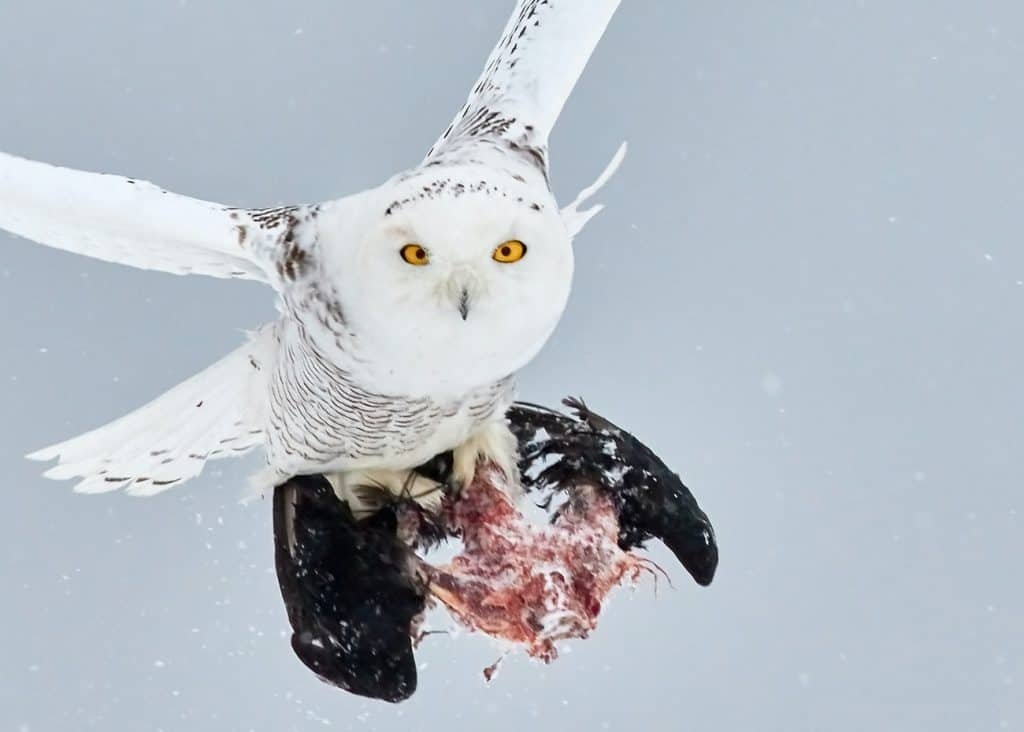
Wingspan
150 cm
Weight
2 kg
Life Expectancy
10 years
Diet
Birds, Rabbits, Fish & Rodents
The Snowy owl is between sixty-three and seventy-three centimetres in length with a wingspan of between one hundred and twenty-six and one hundred and forty-five centimetres.
Snowy owls tend to be found in open areas of marshes, farmland and dunes. The preferred food for the Snowy owl is lemmings, however they will also eat moles, rats, mice, squirrels, prairie dogs, ducks, rabbits, raccoons, seagulls and songbirds.
This species of owl have been seen in a number of state parks around the state of Connecticut and the best places to see them is Beckett Hill State Park in Old Lyme, Hammonassett Beach State Park in Madison, Sherwood Island State Park in Westport, Silver Sands State Park at Milford, Harkness Memorial State Park in Waterford, Sikorsky Airport in Stratford and also areas around West Haven and Bridgeport.
The best time to spot a snowy owl is during the winter months during the early hours of the morning and it is a good idea to focus on coastal areas as this will increase your chances of spotting these magnificent white owls.
7. Long Eared Owl
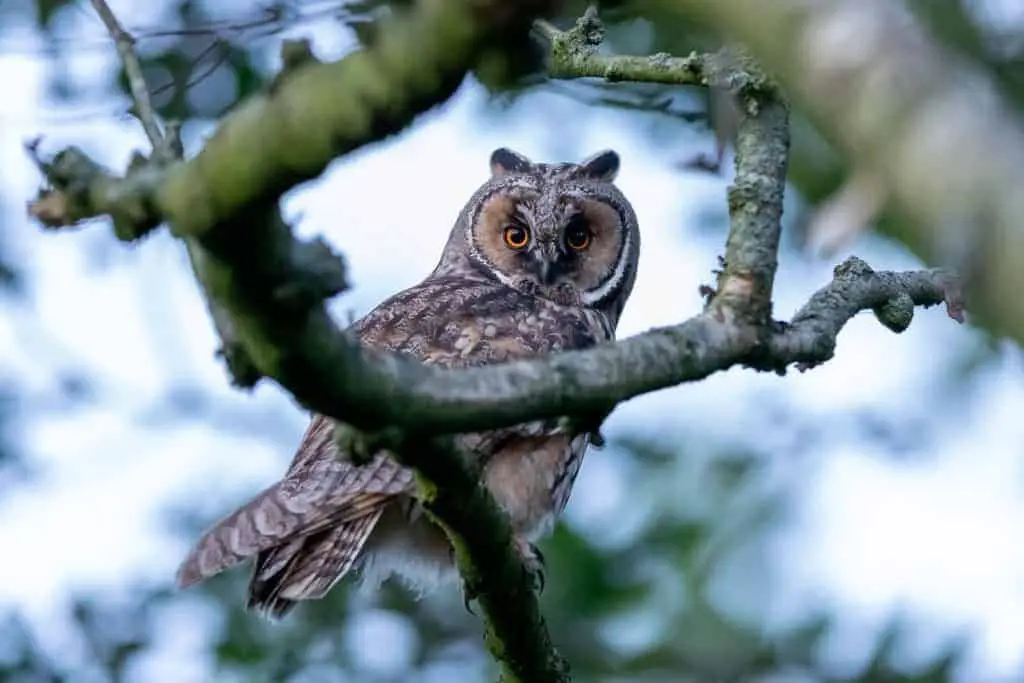
Wingspan
90 to 100cm
Weight
250 g
Life Expectancy
4 years
Diet
Small mammals, mice, rats & rabbits
The Long-Eared owl is a medium-sized species of owl and it is between thirty-five and forty centimetres in length with a wingspan of between eighty-four and ninety-five centimetres.
The Long-Eared owl tends to be a mottled brown orange colour with striking orange eyes and white eyebrows that are very distinctive.
The Long-Eared owls tend to make their habitat in areas of coniferous or mixed woodlands and they prefer dense woodland and hedgerows.
The diet of the Long-Eared owl mainly consists of mice, voles and small birds. During the winter months when it is harder for them to find food, they have been known to eat small birds.
The Long-Eared owl is not a very common species in this state, although some can be found nesting in Connecticut.
The best time to spot these owls is between November and April. They can often be found flying in a zig-zag pattern over areas of open countryside whilst watching and searching for food on the ground.
The Long-Eared owl has been found in many different places across the state of Connecticut however one of these best places to spot one of these owls is in Hammonasset Beach State Park in Madison.
8. Northern Hawk Owl
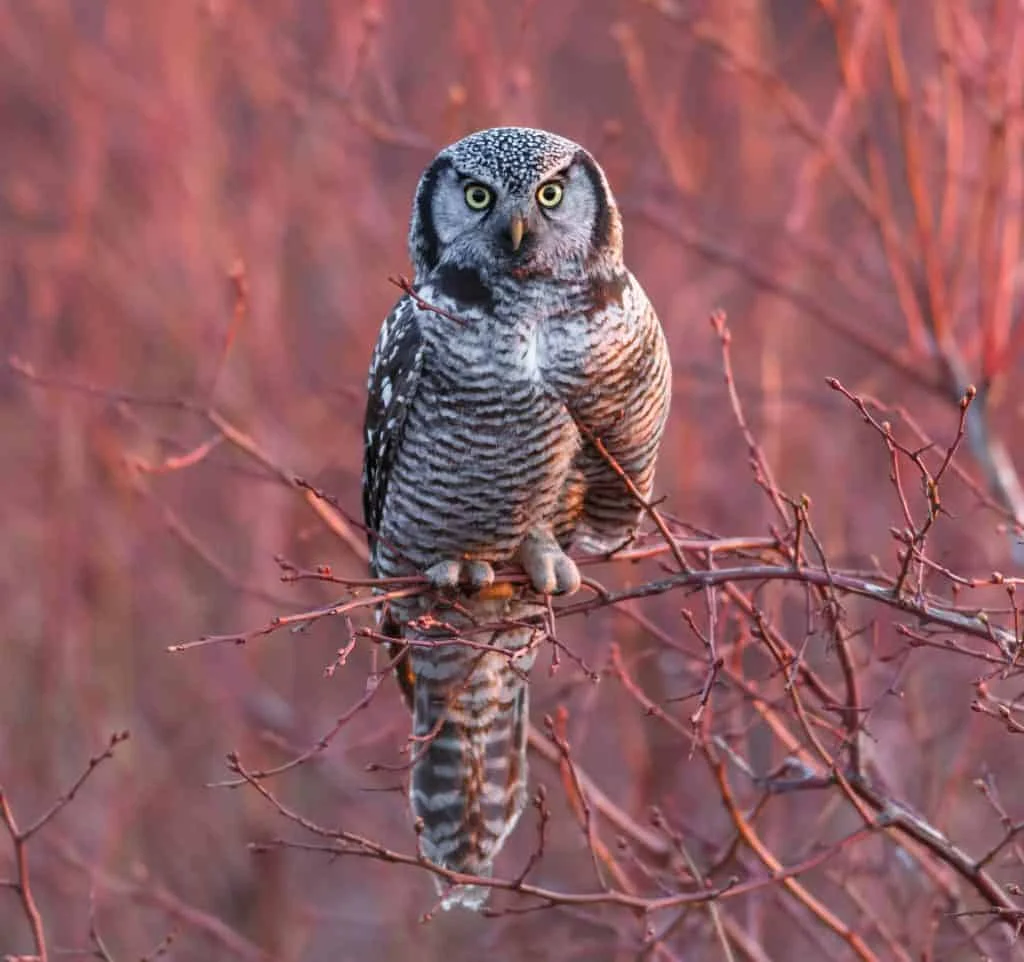
Wingspan
45 cm
Weight
300 -340 g
Life Expectancy
Up to 16 years
Diet
Rodents & Small Mammals
The Northern Hawk Owl tends to be between thirty-six and forty-three centimetres in length with a wingspan of about forty-five centimetres.
This species of owl has a brown plumage with white spots and horizontal brown stripes across its undercarriage.
The females tend to a little bigger in length, but both the male and female wingspan is about the same. The diet of the Northern Hawk owl mainly consists of voles and other small rodents.
They have also been known to eat small mammals such as lemmings and mice and also birds.
The Northern Hawk owl tends to make its habitat in coniferous forests, mixed woodland forests especially areas with a good mixture of deciduous trees such as poplar, willow, larch and birch.
These are a very solitary species of owl and will tend to make nests in remote areas.
The Northern Hawk owl can be seen in the state of Connecticut during the winter months when they visit the area in large populations.
9. Boreal Owl
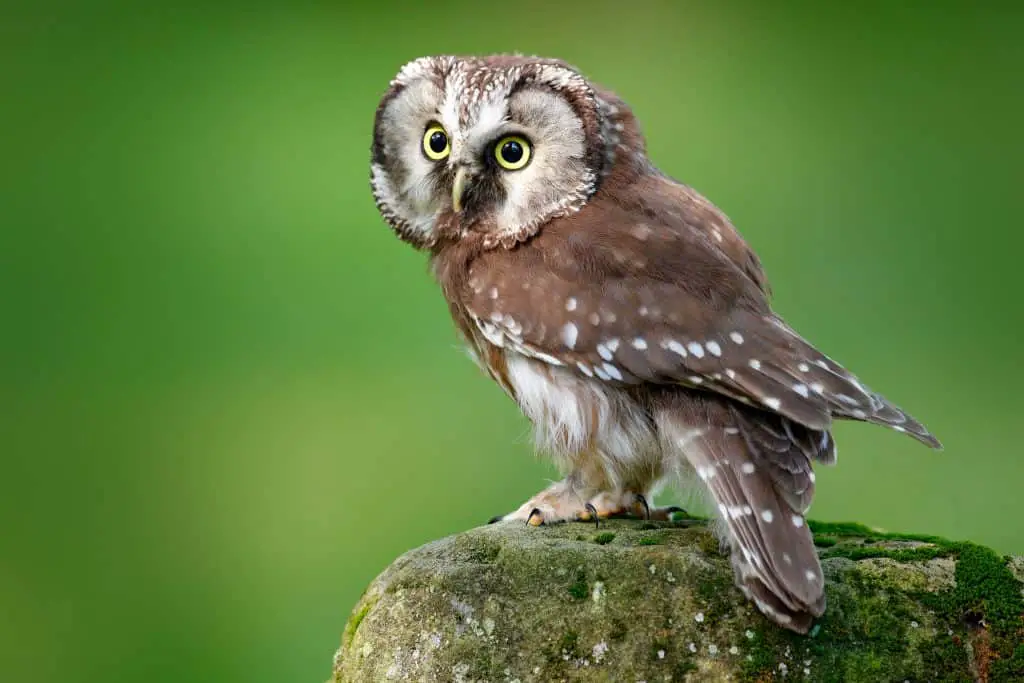
Wingspan
50–62 cm
Weight
120 g
Life Expectancy
16 years
Diet
Small mammals, birds & insects
The Great Grey Owl is one of the biggest owls that can be seen in the state of Connecticut.
The Great Grey owl has a silvery grey plumage all over with fine white barring and faint barring and striking yellow eyes. The Great Grey owl is a species that is widely spread across the state of Connecticut.
This species of owl is between sixty-one and eighty-four centimetres in length with a wingspan of one hundred and forty and one hundred and forty-two centimetres.
It is not uncommon for Great Grey Owl have a wingspan of about one hundred and fifty-two centimetres.
The diet of the Great Grey Owl is mainly small rodents especially voles, however they have also been known to eat mice, rats, rabbits, weasels, squirrels and some bird species.
The Great Grey Owl tends to make its habitat in areas of coniferous forests and dense boreal forests.
10. Burrowing Owl
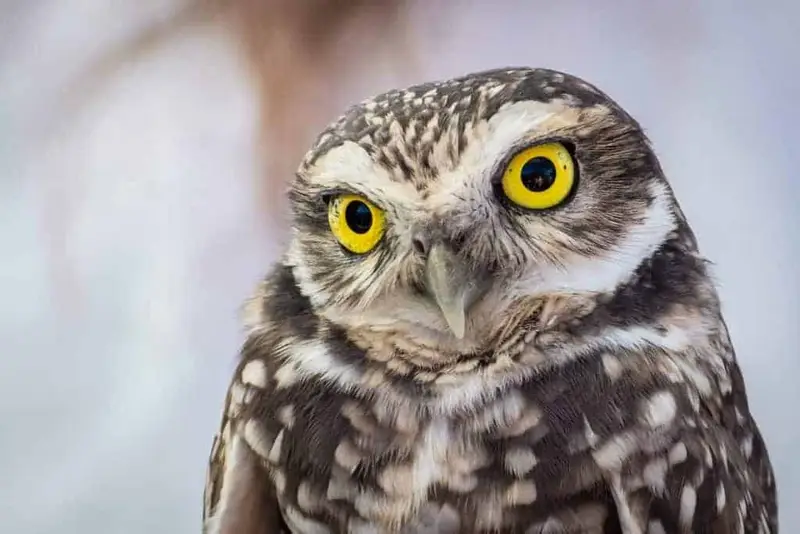
Wingspan
51-61 cm
Weight
140-240 g
Life Expectancy
10 years
Diet
Large Insects and Small Rodents
The Burrowing Owl is a small ground-dwelling bird that is between nineteen and twenty-eight centimetres with a wingspan of between fifty and sixty-one centimetres.
These owls are a sandy colour which enables them to blind into their preferred surroundings, however over recent years their population has decreased mainly due to the loss of habitat.
The Burrowing Owl tends to make its habitat in deserts, grasslands or areas of open habitat.
The distribution of the Burrowing owl across the state of Connecticut is patching but they can still be spotted from time to time.
They will often use the burrows of other species such as prairie dogs.
The diet of the burrowing owl consists of small mammals, reptiles, insects, amphibians, reptiles and other birds.
These owls are most active at dusk and dusk with most of the mammal’s consumption taking place during the night and insect consumption happens during the day.
These owls can be seen flying over extensive areas of open ground.
12. Barred Owl
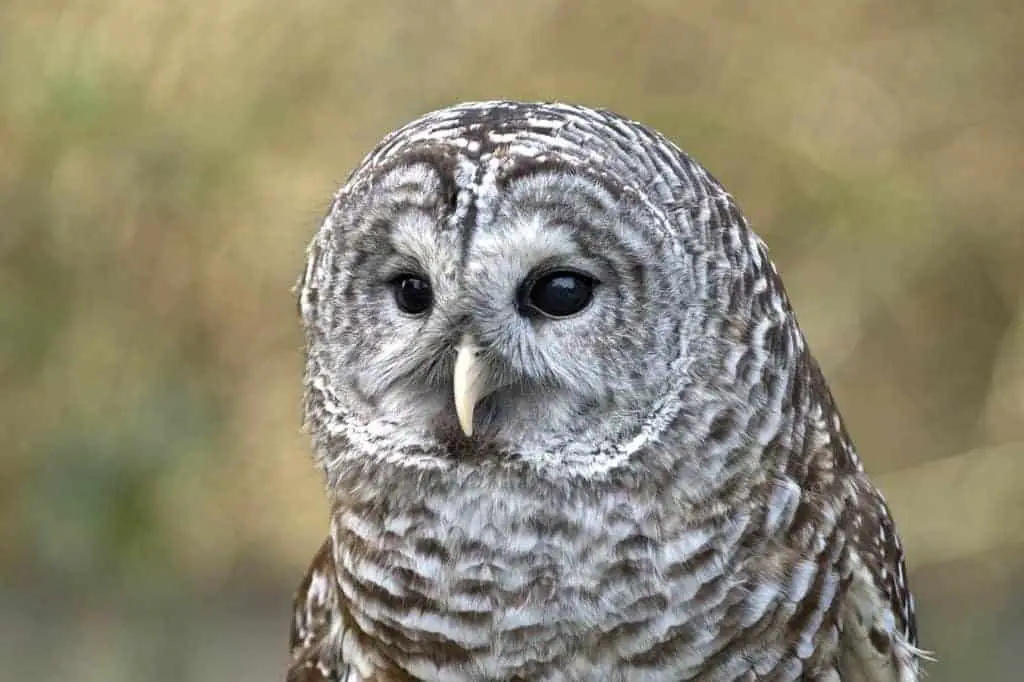
Wingspan
96-125 cm
Weight
468-1,150 g
Life Expectancy
10-23 years
Diet
Small mammals
The Barred Owl is a large nocturnal species that is between forty-eight and fifty-one centimetres in length with a wingspan of between ninety-six and one hundred and twenty-five centimetres.
These owls tend to be of a mottle brown colour with white speckles throughout the plumage with dark brown eyes.
The undercarriage of these owls is white and features vertical bars which are a brown colour.
The Barred Owls make their habitat in large forest areas with mature vegetation preferably with a combination of deciduous and evergreen species.
They tend to make their nests within tree cavities. The diet of the Barred owl mainly consists of mice, small rodents with occasional shrews, rabbits, squirrels and other small mammals.
They have also been known to eat lizards, frogs, snakes some insects and salamanders.
Barred owls are very common in Connecticut, especially within mature woodlands and swamp areas.
The Barred Owl is most active during darkness, however they have been known to be out during daylight especially during the winter months.
The Barred owl can be found across the state of Connecticut and some of the best places to see them includes along the coastline of New Haven, Madison, Branford, Milford, Stratford, Fairfield, Old Lyme, Stonington and Groton.

More Articles.
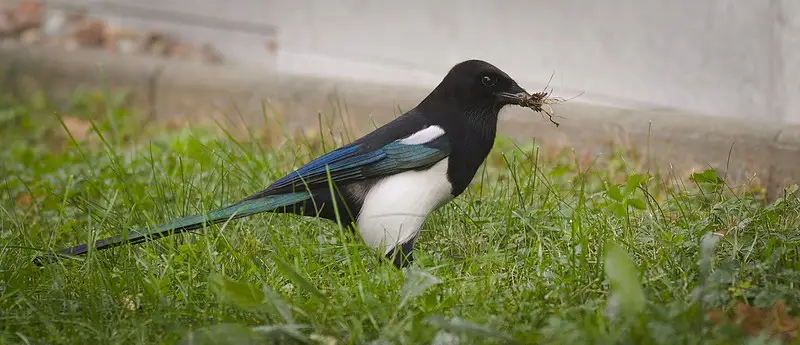
What does it mean to see a Single Magpie? (Symbolism & Meaning)
Seeing a single Magpie can mean a variety of things depending on your culture however
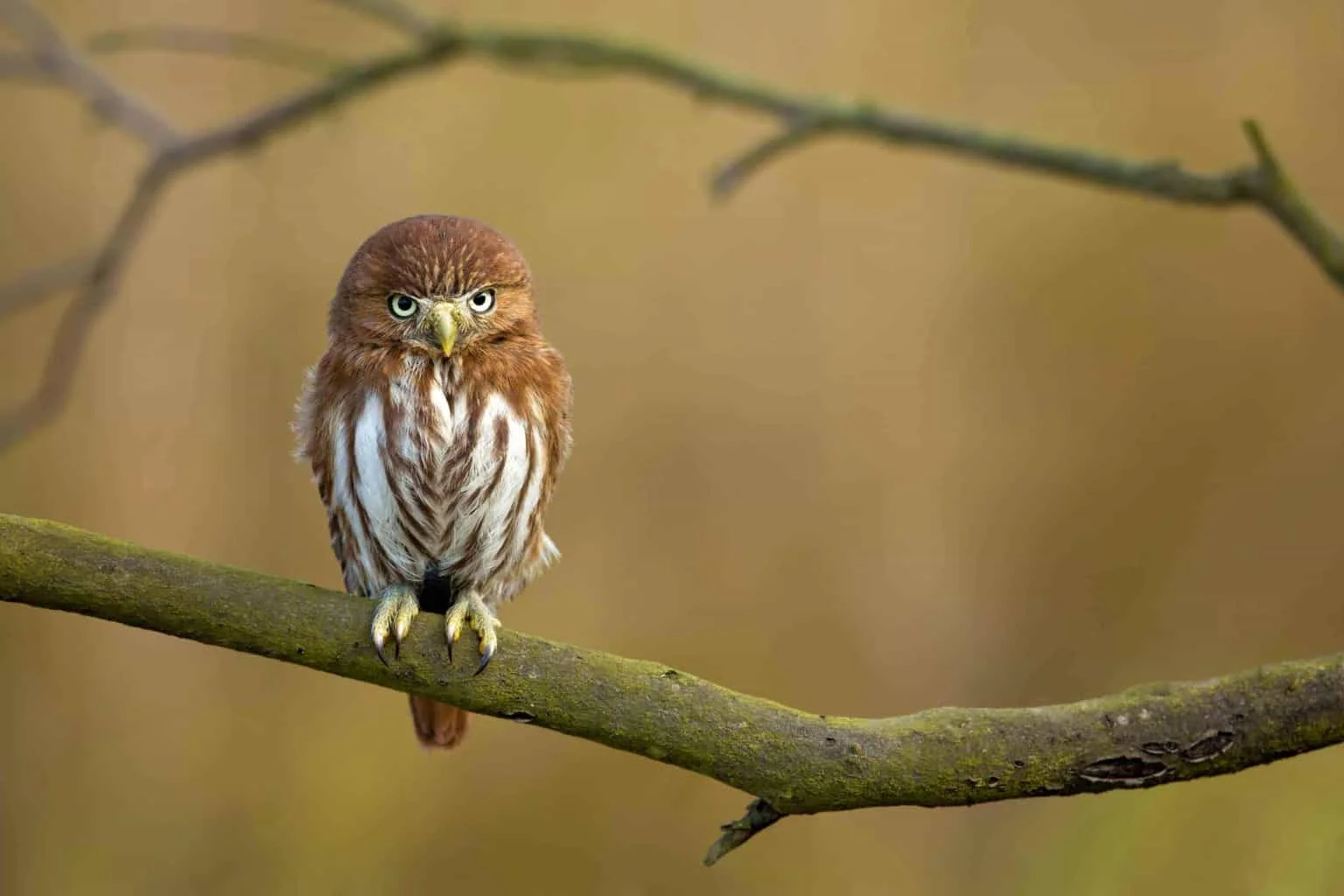
Owls are without a doubt one of the more interesting creatures around. These fearsome predators
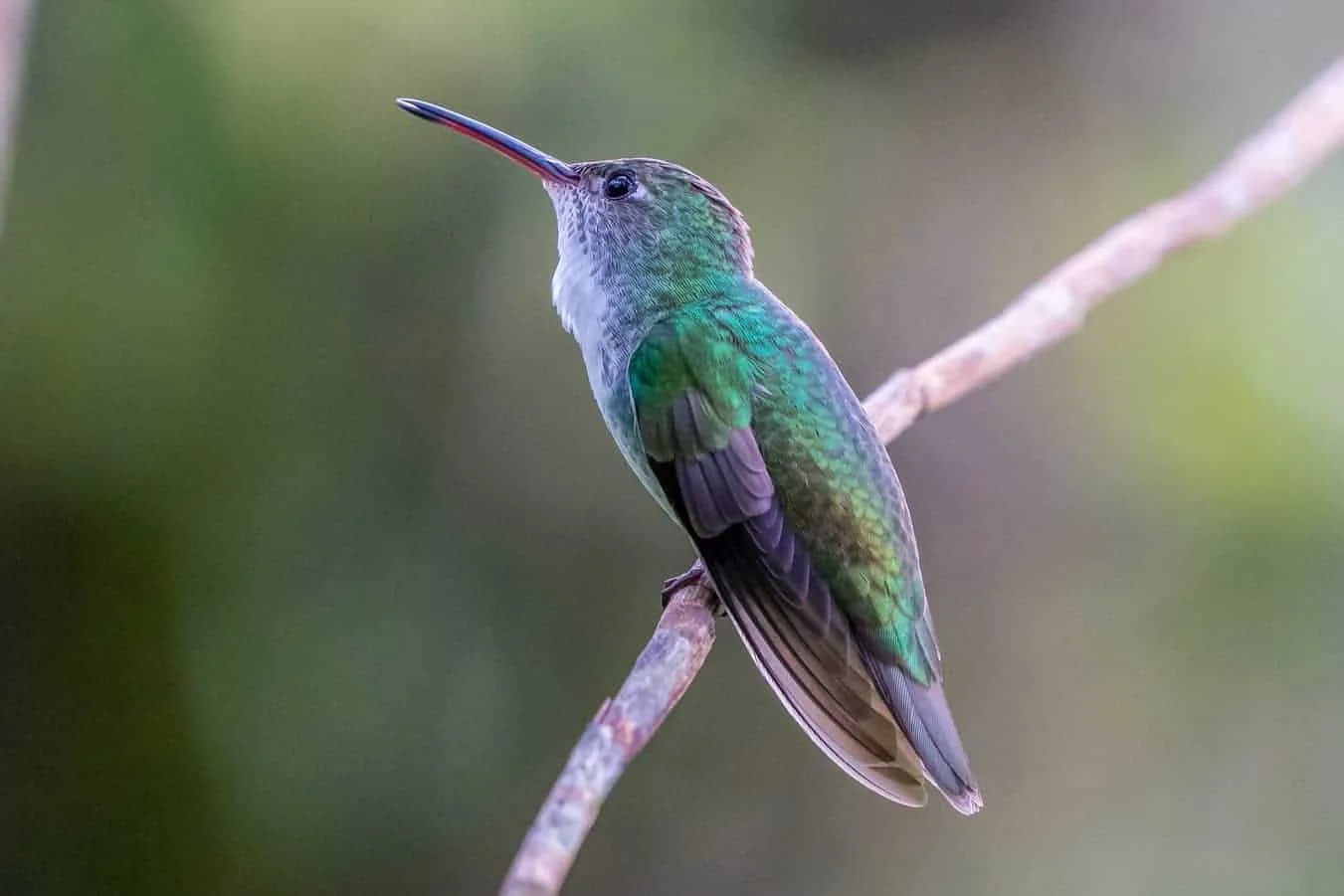
How often do Hummingbirds sleep?
Have you ever watched a hummingbird and envied it for its energy? A simple glance

About Us
We are avid bird-watchers who recently retired, allowing us more time to travel the world. Fortunately, we have managed to visit numerous countries around Europe, Asia, and America. Watching and photographing birds has been a passion for many years and we are making the most of the extra time on our hands!
